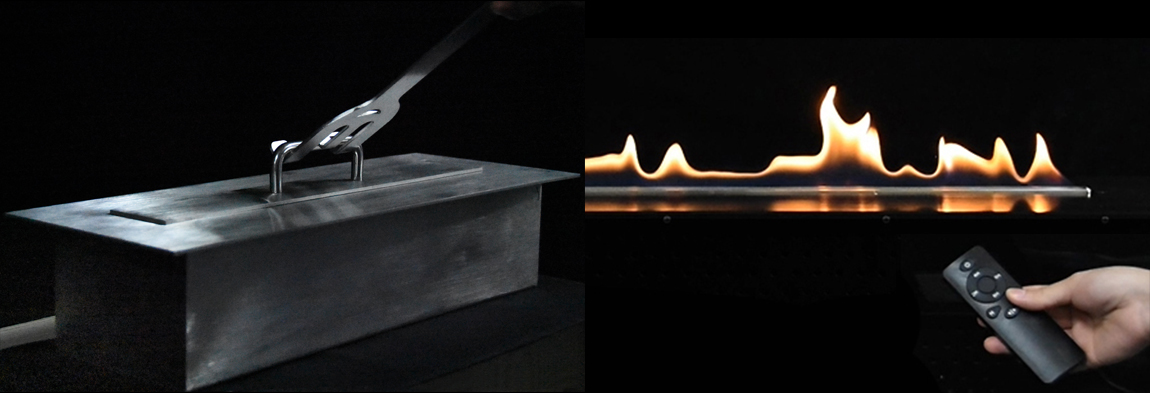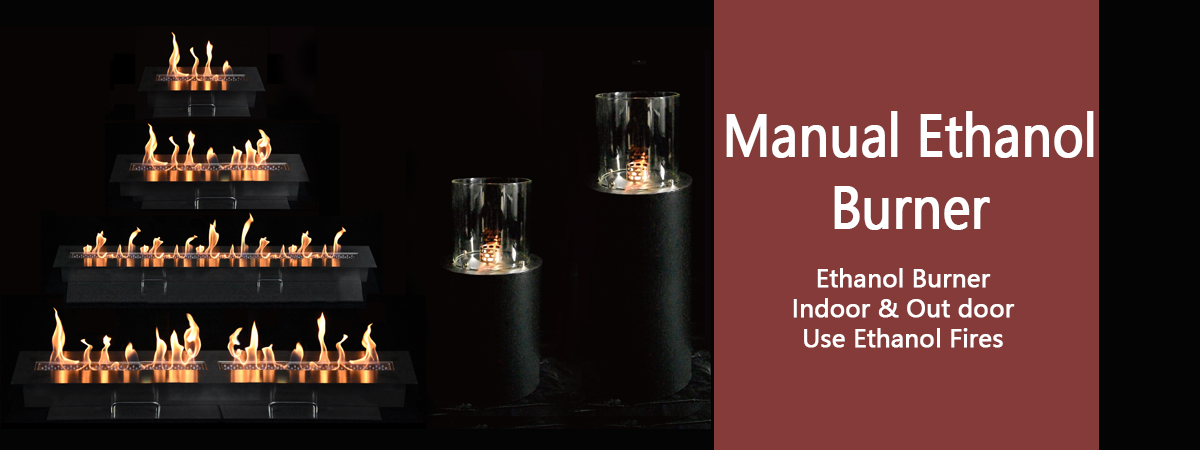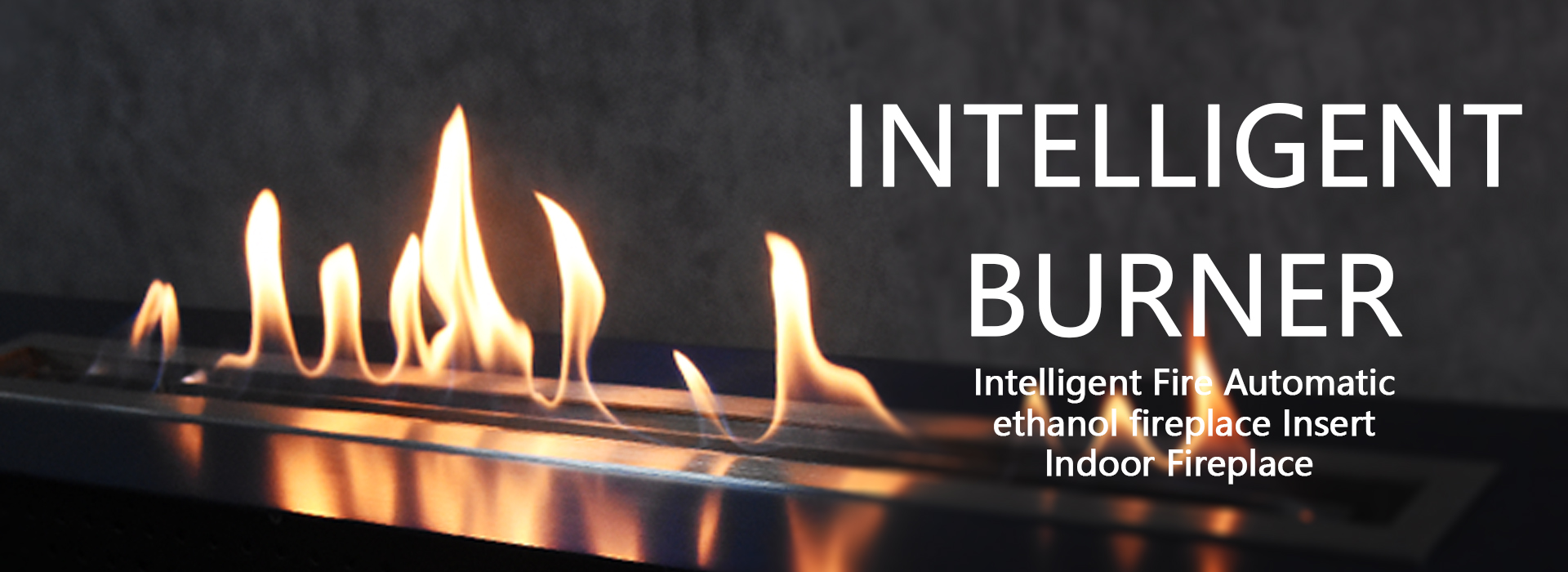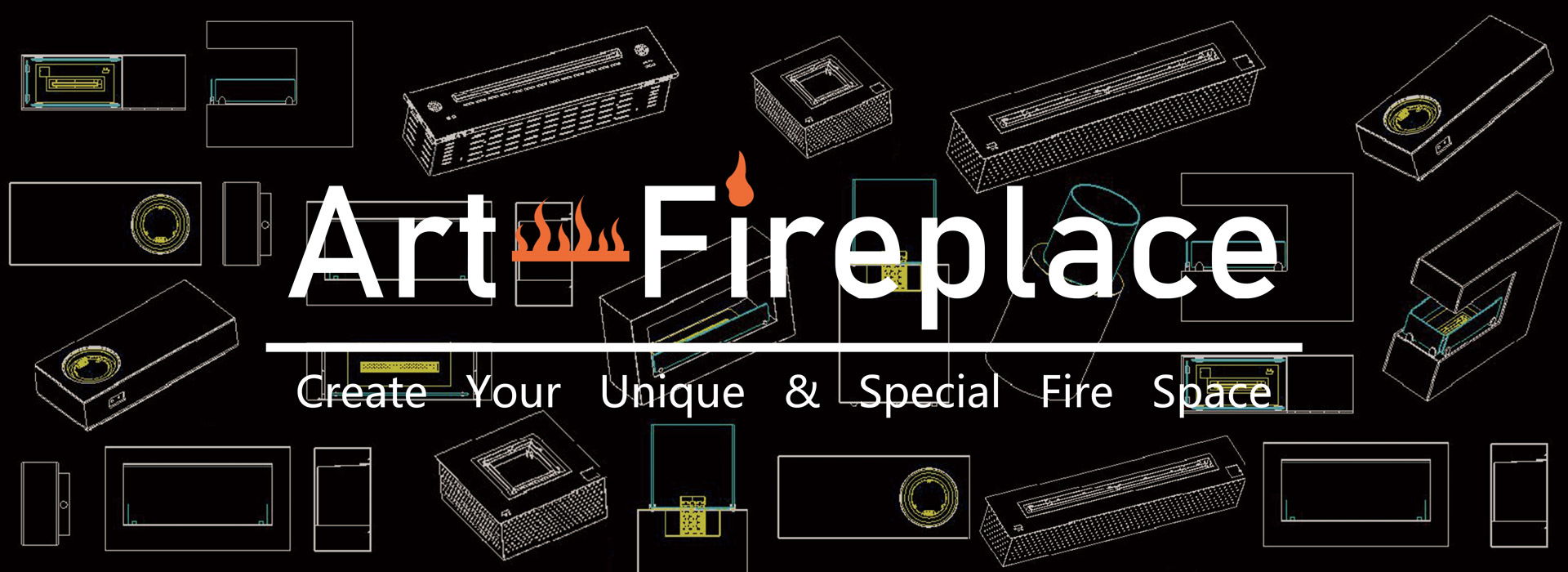Differences Between Manual Ethanol Fires And Automatic Ethanol Fires
Choosing the perfect bio ethanol fireplace from the wide array of models and burner types available can be quite daunting. อย่างไรก็ตาม, understanding waht the differences are between a manual ethanol fireplace and an automatic ethanol fireplace can help you make an informed decision.
The key contrasts lie in their operation and control mechanisms. A manual bio ethanol fireplace requires manual intervention for fuel filling, ignition, flame control, and extinguishing, with the user personally monitoring the process. On the other hand, an automatic ethanol fireplace incorporates electronic controls, such as pumped fuel filling, automatic ignition, adjustable flame intensity and electronic extinguishing options, providing convenience and added safety features. Let's delve deeper into their distinctions to help you make the right choice for your needs.

Automatic ethanol burners are a step up from manual ethanol burners. หัวเผาเอทานอลอัตโนมัติสามารถสั่งงานได้ด้วยรีโมทคอนโทรล, แผงควบคุมหรือแม้แต่สมาร์ทโฟนและระบบสมาร์ทโฮมของคุณ. หัวเผาไบโอเอทานอลที่ควบคุมจากระยะไกลเหล่านี้ยังปลอดภัยยิ่งขึ้นด้วยเซ็นเซอร์ความปลอดภัยจำนวนมากที่ควบคุมการทำงาน.
A manual ethanol fireplace insert is a stainless-steel container that is filled with bio ethanol fuel. เพื่อเริ่มเตาไฟ, คุณต้องใช้ไฟแช็กยาวเพื่อจุดเชื้อเพลิง. ประเด็นคือคุณต้องปรับเปลวไฟด้วยตนเอง และการดับไฟก็ใช้วิธีเดียวกัน.
Bio ethanol fireplaces first appeared in 2005. การนำไบโอเอทานอลมาใช้ทำให้สามารถวางเตาผิงได้เกือบทุกที่และไม่มีการระบายอากาศ, ปล่องควัน, ควัน, เขม่าหรือการบำรุงรักษาที่มีราคาแพง. ตั้งแต่นั้นมา, เทคโนโลยีและความปลอดภัยมีการพัฒนา, และวันนี้เรามีไบโอเอทานอลสองประเภท: Manual and Automatic bio ethanol burners.
These two types each have their advantages and disadvantages. Hence, the type of burner you select, depends on what requirements you have for your fireplace, where it will be used, and what your budget is.
Although there are only two types of bio ethanol burners, the products from different manufactures can vary and offer differences in the way their burners work. For this reason, the information you will find in this guide will only be indicative. If you want a more accurate description of each manufacturer's bio fireplace and burners, you should check out the specific product page and read the manual linked on the page.
You can find all of our automatic or manual bio ethanol burners here:
Bioethanol Fires with a Manual Bio ethanol Burner
A manual bio ethanol burner, is a steel container made of stainless steel, which you fill with bioethanol. The burner has an opening, that can be round or long, depending on the shape of the burner. The flame is ignited with a lighter and extinguished by smothering the fire. The manual burner is the most known, and therefore, it is seen in most bioethanol fires, especially in wall mounted and freestanding bioethanol fires.
To increase the safety of manual bioethanol burners, almost all manufacturers had to find a method for how to avoid spilling the bioethanol out of the burner if it should fall or tip over. The most common method is the use of ceramics fibre cotton in the burner. This is designed to absorb the bioethanol fuel, and makes it impossible to spill the bio ethanol fuel out of the burner if it would tip over by accident.
Benefits of a Manual Bioethanol Burner

1. No power or cables are required and it can be mounted everywhere
Manual bio ethanol burners and fireplaces can be installed and placed freely, เนื่องจากไม่ต้องใช้สายไฟหรือการเชื่อมต่อสายเคเบิลอื่นๆ, และไม่จำเป็นต้องมีปล่องไฟ, ช่องระบายอากาศหรือปล่องควัน. The only factor to consider is which size you want the burner to have.
อย่างไรก็ตาม, คุณ, แน่นอน, ยังคงต้องระวังอันตรายจากไฟไหม้ทั่วไปและระยะปลอดภัย. คุณสามารถอ่านเกี่ยวกับระยะห่างที่ปลอดภัยได้ในคู่มือในหัวข้อนี้.
2. Manual bio ethanol burners are cheap
Bio ethanol fires have existed for some years, with the manufacturers continuously optimizing the production costs. นอกจากนี้, หัวเผาแบบแมนนวลไม่จำเป็นต้องใช้เทคโนโลยีดิจิทัลใดๆ, และนั่นหมายความว่าราคาของเตาผิงชีวภาพด้วยตนเองนั้นค่อนข้างต่ำ ณ จุดนี้.
Disadvantages of a Manual Bio ethanol Fireplace
1. Operated manually
The most obvious disadvantage of the manual bioethanol fireplace is the manual control. It means that you have to get close to the flame for adjusting or switching the burner on and off. Therefore, a manual bioethanol fire should not be operated by children.
2. Fewer safeguards
Although the manual burners are perfectly safe when you follow the instructions and use common sense, the automatic bio ethanol fires have additional safety sensors that the manual ones do not. These sensors are not available when using a manual biofire.
Bioethanol Fireplace with an Automatic Bioethanol Burner
Automatic bioethanol burners require, just like the manual burners, bioethanol fuel to function. อย่างไรก็ตาม, this is the only real similarity between them.
Bio ethanol fires with automatic burners are much more technical. Depending on the selected model and manufacturer, you can control them with a remote control, via a control panel, an app, a home-system or Wi-Fi.
For the automatic burners, the bioethanol is filled into an external fuel tank. From there, it is pumped up into the burner for incineration when it is turned on. With manual burners, you just pour the bioethanol fuel directly into the burner opening.
The automatic burner is often seen in built-in bio ethanol fires and used for new constructions, bigger renovation or interior design.
Benefits of an Automatic Ethanol Burner

1. Easy to control the flame
It is easier to extinguish and ignite an automatic burner. All you have to do, is click on the remote control, the control panel on the burner or via an app. Some automatic bio ethanol fires also allow adjustment of the flame size and control over the amount of radiated heat.
2. Safety sensors
An extra bonus with an automatic burner, is the number of safety sensors, which are not possible to get in a manual burner. This may include sensors that monitor CO2 levels, shaking, overheating, ฯลฯ. So the fireplace will be switched off automatically, in case the sensors picks up any dangers.
3. Fuel economy
Automatic burners often have a better bioethanol fuel economy, since the fuel is only pumped into the burner, when it is needed. This means that no bio ethanol fuel will be wasted when the fireplace is being switched on and off. นอกจากนี้, it will also not evaporate by itself if unburnt bioethanol is left in the fireplace.
Disadvantages of an Automatic Burner
1. Expensive
One of the biggest disadvantages of an automatic bioethanol burner is the price. An automatic bioethanol burner costs a lot more than its manual counterpart. The reason for this is that the technology used in the automatic models is still relatively new and more advanced. This means, it requires more development and working hours to produce, and the materials needed for the manufacturing are more expensive.
2. Requires power
In order for all the electronic components in the burner to work, it is necessary to have a power connection close to the installation of the ethanol fireplace. This makes the installation less flexible.
อย่างไรก็ตาม, some automatic burners are equipped with a battery and therefore require recharging instead.
Art Fireplace Team Focus on Ethanol Fireplaces for more than 14 years and we are obliged to offer high quality products for all customers.

Art Fireplace Technology Limited.
PROFESSIONAL INTELLIGENT FIREPLACE LEADER
Official Website: https://www.art-fire.com
Phone:0086 13928878187 อีเมล:[email protected]
ที่อยู่:FLAT/RM 705,7/F,FA YUEN COMM BLDG NO.75,FA YUEN STREET,MONG KOK,KLN,HK
เวลาโพสต์: 2024-04-24
